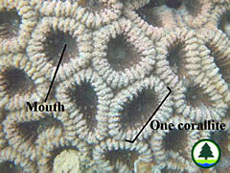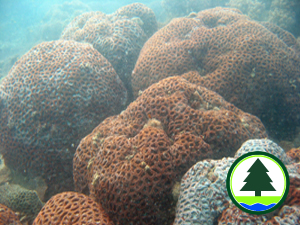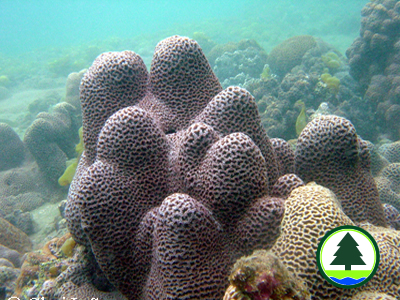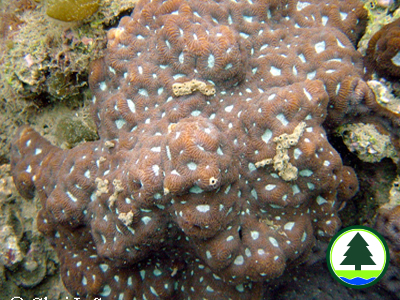Coral Field Guide
|
What is the distribution of Coral Communities in Hong Kong? Do you know the Basic Biology of Hard Corals? Coral structure
Individuals of hard corals are called polyps. Each polyp is anemone-like in its general structure. Each polyp has a mouth that is surrounded by tentacles. The mouth leads to the internal body cavity where the gut is located. Digestion takes place within this cavity, and all undigested food are accumulated in the body cavity. The cavity is surrounded by flaps of tissues called mesenteries. Reproductive structures (gonads) are located on these mesenteries.
Coral individual can divide asexually by budding to form a large colony that is made up of many many individuals connected to one another. Some hard corals though, do not form colonies. They are called solitary corals.
Each individual polyp has its own skeleton structure that is cup-like called corallite. Each polyp can be retracted into the corallite, so the corallite is like a house for each of these individual polyps.
Depending on individual coral species, for some species, the polyps are closely packed with one another, but for some, they are not. Some polyps are large, some are small. Some are long and some are short. All these features will also be reflected in the corallites, such that some corallites are close to one another, some are more sparsely distributed, some are large or small, some are deep and some are shallow (see section on corallite sizes and shapes below for examples). A coral colony will have many corallites and depending on how they grow, many develop into colonies of different growth forms (see section on colony growth forms for examples). Colony growth forms, corallite shapes and sizes are some of the important morphological characteristics used to distinguish different species of corals.
|
|||||||
|
|||||||




